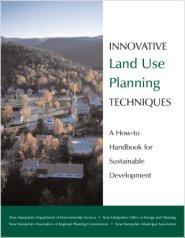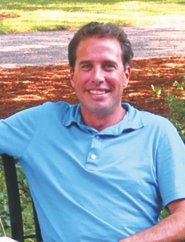
Gulf Voices: A pimple on the posterior of progress
Printer Friendly Page
By Eric Williams
 |
In the late 1980s, no one was moving to Warner, New Hampshire to make a living off the land. Rather, the land was attracting people seeking a better quality of life. Warner embodied that rural character the city-weary longed for. White clapboard homes clustered around the town hall, the library, Cricenti's Market and Perkins Hardware. The outskirts of town sprouted occasional colonial houses with rambling ells and attached barns among the remaining farms and woods.
For those newcomers, protecting that centuries-old character sometimes meant attacking any proposal that might result in more people from “away” moving into their little corner of paradise. I saw this firsthand in 1988 while working as a planning consultant, helping the town draft a new master plan and review development proposals. One proposal involved converting the 68 acres of pasture adjacent to Fred Courser's place into 14 house lots called Burnt Elm Acres. In keeping with the law to alert residents to any potential development, a public hearing was held.
Fred Courser was the one curmudgeon whose pronouncements Warner town meeting-goers anticipated the most. He only spoke once during a meeting, when he felt like it, and whether or not what he had to say was on topic. Fred was short and broad with a bald head and thick hands and fingers. He lived on Schoodac Road all of his 80-some years. A life-long farmer, Fred was also an expert on antique tools; people came from all around New England to get his opinion when they couldn't determine the use and date of manufacture of an old tool. His mailbox was shaped like a large iron hammerhead.
A public hearing
More than 100 people came to the public hearing. The town planning board, whose charge it was to say yea or nay on the merits of the proposal, sat at two long tables up on the stage. One by one, people stepped up to the microphone and gave impassioned pleas and raised pertinent questions. Can the road handle the 140 extra cars a day caused by the development? Will Schoodac Brook flood our houses? Where will the deer go? Will the houses be designed in an authentic New England style? Won't the septic systems overflow? How many school kids will we taxpayers be asked to support? There was even a question about the turtles. It turned out that an expert on turtles lived in town. David Carroll would go on to write and illustrate several widely acclaimed books on turtles in the coming decade. But at the time, he seemed like another wild-eyed newcomer searching for a reason to stop the development.
“I've mucked around in the swamps around Schoodac Brook and I've seen Blanding's turtles,” Carroll said, his blue eyes opening wider with excitement. “When you build that bridge across Schoodac Brook, the turtles will no longer be able to move along the shore. It's not worth the extra lots you get by building the bridge.” At the end of his remarks, he added, “I moved here from Pembroke, Mass., to get away from this.”
About 30 minutes into the public hearing, Fred Courser stood up in the old balcony of the Town Hall, dispensing with raising his hand or waiting to be recognized by the chair. A hushed silence fell over the crowd. Fred pointed the thick, stubby index finger of his right hand down at the stage. “You planning board,” he roared. “You're nothing but a pimple on the ass of progress.” Then he sat down.
Old dog, new tricks
His reprimand caught me by surprise. I thought a guy like Fred Courser, a farmer and lover of old tools, would not want that to change, that he would be conservative in the truest sense of the word. But generations of working the land also produced an appreciation for what sells. For more than 200 years, progress was measured by sales of food and fiber, by the jumps and lags in milk prices, hardwood prices, maple syrup, whatever could be coaxed from the rocky land in this cold climate. Although progress included the internal combustion engine, the telephone and electricity, these innovations did not change the hard reality that the only source of income in a place like Warner was the land. To have survived this long off the land is to have known what sells and when to sell it. Poor farmland and average timberland were valued by the prices of their produce. To people from away, that value was not much. And people like Fred knew that a commodity that lay dormant for eons was now worth more than anyone previously imagined. Why should good value be forsaken for something as hard to grasp as rural character?
At the end of the evening, the planning board gamely accepted the testimony, but some of the members gave away their positions by openly agreeing with speakers who questioned the audacity of the proposal. They spent a lot of time talking about options for turtle crossings.
Similar agonizing scenarios play out frequently all across New England. Often, local planning boards and residents feel ill-equipped to deal with the changes brought by growth. It is particularly challenging to determine where to draw the line between the public and private interests that both need protection.
Zoning tries to do this, but rarely achieves a satisfying balance. Landowners often complain when proposed zoning changes will lower their property values, asking for compensation for their losses, though they never step forward to complain when zoning increases property values.
There are ways to deal with landowner economics while maintaining the rural character desired by many communities.
The New Hampshire Department of Environmental Services (DES), working with the nine regional planning agencies, the New Hampshire Office of Energy and Planning and the New Hampshire Local Government Center, is developing a guide to innovative land-use techniques. There are some promising new approaches that rely on old ideas.
Many of the techniques and model ordinances included in the new DES land-use guide--due for publication this spring--offer ways to keep a distinct and recognizable landscape without relying on the economic systems of the past, when the property tax actually related to the income a property could generate as a farm.
The guide is written in the spirit of preserving a working landscape, one that can be harvested sustainably for food, fiber and shelter, and one that can provide the essential affirmation of our specific place on earth - a region that is distinct from all others with large tracts of land that are not chopped up into suburban house lots or strip malls. The guide also keeps in mind that people own land. They've invested, they've inherited and they've worked to provide for themselves and their heirs a financial foundation built on the value of that land.
Changing land use
 |
COURTESY: ERIC WILLIAMS |
We can support private investment and protect local and regional values by changing the way we use land. Conservation subdivisions and village plan developments can help preserve a traditional New England land-use pattern while allowing for more growth. The higher density places - the human habitat - can be built at a scale. Pedestrian ways can take precedence over roads and parking lots, improving opportunities for social interaction and building a sense of community. Development can be made attractive, as many New England villages and downtowns have shown.
Postscript: It came to pass that the real estate market crashed before the bulldozers came in to scrape Burnt Elm Acres into reality. Fred Courser died a few years back and his family land, including 317 acres surrounding the proposed development, is permanently protected by a conservation easement. So whatever happens on Burnt Elm Acres will be forever flanked - in harmony or mockery - by pastures and woods. I wonder what Fred Courser would think of that.
Eric Williams is a supervisor with the Watershed Assistance Section, New Hampshire Department of Environmental Services. He is an MA candidate in non-fiction writing at the University of New Hampshire.
© 2007 The Gulf of Maine Times